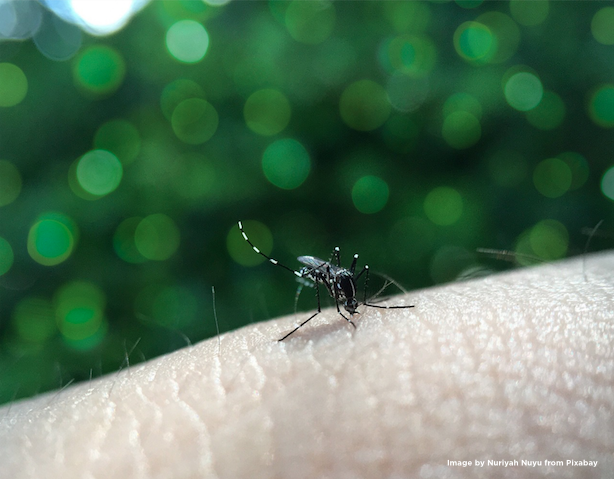Dengue in Argentina: Is it time to redefine the endemic?
Abstract
Dengue is the leading arbovirus worldwide with approximately 3.9 billion people exposed in more than 120 countries. It belongs to the Flavivirus family and there are four known serotypes (DENV 1, 2, 3 and 4) that do not confer permanent cross immunity. It presents an urban cycle, where the human is the host and the mosquito vector is of the Aedes genus. Both the main vector, Ae. aegypti, and the less widely distributed Ae. albopictus, have spread to all continents, and in our country south to the province of Neuquén. This adaptation linked to climate, urbanization, living conditions and vector control actions, associated with the increased movement of people, is the cause of the continuous growth of cases (1).
According to the World Health Organization (WHO), reported cases increased from 500,000 in the year 2000 to 5.2 million in 2019. The regional occurrence has also changed, historically predominant in Southeast Asia and the Western Pacific, with 80% of cases currently occurring in the Americas, mainly in the Southern Cone. During 2023, the highest number of cases in the Americas was recorded, with a total of 4,565,911, including 7653 (0.17%) severe cases and 2340 deaths (case fatality rate of 0.051%) (2).
In Argentina, the reemergence of dengue, after more than 80 years without autochthonous cases, was identified in 1997-1998 in the northwestern region (NOA) and in 2000 in the northeastern region (NEA) of the country. The trend continues to increase, with an extension of its distribution towards the Central region, with a temperate climate, and, recently, towards the Cuyo and Southern regions. Since 2006, there have been autochthonous cases in all summer periods, with the first epidemic of national magnitude occurring in 2009, and the inter-epidemic cycles have been progressively shortened with outbreaks in 2016, 2020, 2023 and 2024 (current). Although it is seasonal, occurring mainly during summer and autumn, in 2023 the first continuity of autochthonous transmission was observed during the winter period (1, 3).
It is estimated that 70% of infections are asymptomatic, oligosymptomatic or self-treated, without receiving formal medical assistance or being recorded. In its symptomatic form it is an acute, systemic and dynamic disease with high morbidity, which in the context of epidemics generates great impact on healthcare systems. The disease has three phases: febrile, critical and convalescent or recovery. The febrile stage represents a diagnostic challenge with other diseases that share the mosquito vector, especially urban arboviruses such as Chikungunya and Zika, introduced to the Americas in 2013 and 2015, respectively. The overall case fatality rate of dengue fever is less than 0.05%, historically higher in early childhood, but in recent years and, especially in our region, higher in those over 65 years of age. The current care protocol is based on the detection of alarm signs with high sensitivity (90%) to identify patients at risk of progressing to severe dengue. The correct screening of cases and early intervention allow timely treatment, based on early and exhaustive rehydration, reducing the need for highly complex assistance, as well as fatality, which in severe cases is as high as 8%. The risk of severe dengue depends on viral determinants (serotypes and/or genotypes involved), age of the individual, predisposing conditions of the host such as diabetes, high blood pressure, renal and/or cardiac disease and previous infections by another serotype, which can generate antibody-mediated immune exacerbation, and finally, on the experience of healthcare systems in dealing with these patients.
Since 2003, the Pan American Health Organization (PAHO) has recommended the Integrated Management Strategy (IMS) model for Dengue Prevention and Control, expanded in 2019 to the control of urban arboviruses, focused on four strategic lines: promoting the integrated prevention approach, strengthening healthcare services in diagnosis and management, strengthening epidemiological surveillance, and establishing a network of diagnostic laboratories with adequate technical capacity (4).
Among vector management strategies, those that have the greatest impact are those that include community education and participation in environmental management. Insecticide (pyrethroid) resistance in Aedes spp. is an emerging problem. Currently, to the range of actions recommended and implemented (biological, physical and/or chemical control of the immature and/or adult stages of the vector), other control strategies have been added, such as the release of biologically sterilized mosquitoes, without the capacity to carry dengue virus, with bacteria such as Wolbachia (5).
Vaccines are included in the IMS as a necessary tool. There are about 15 in development and two are approved for commercialization: CYD-TDV and TAK- 003, with only the latter being available in our country. The proven efficacy of TAK-003 in preventing dengue cases and hospitalization is variable depending on the serotype and is higher in people with previous infection. The implementation of programmatic vaccination has not been evaluated to date; it should be considered within the IMS and with a correct risk stratification (6).
The situation with dengue has changed drastically in recent years, going from being an epidemic course infection or occurrence in travelers, to being installed in our region as an endemic with epidemic outbreaks. From the health field, it is necessary to change our approach considering dengue as one of the main differential diagnoses of acute febrile syndromes in most of Argentina during the summer season, incorporating the possibility of concomitant transmission of other urban arboviruses, and preparing the healthcare system for proper diagnosis, risk categorization and early treatment. Innovation in vector management and vaccination strategies could be an essential part of harm reduction in the not too distant future, but there is no "silver bullet" and it will be essential that actions are integrated and sustained over time, including community and institutional participation, generating an integrated, organized and sustained management at all levels.
Downloads






